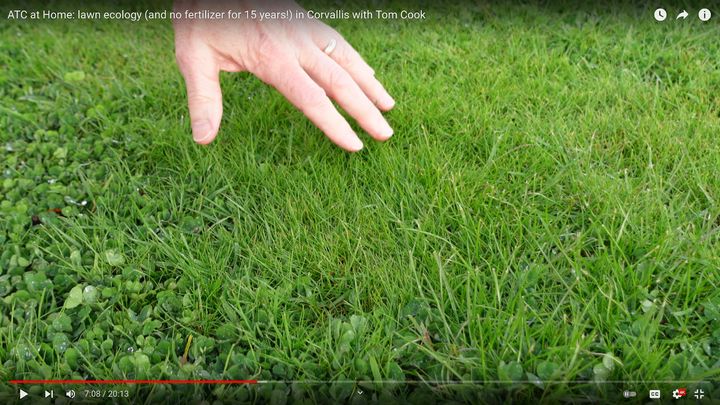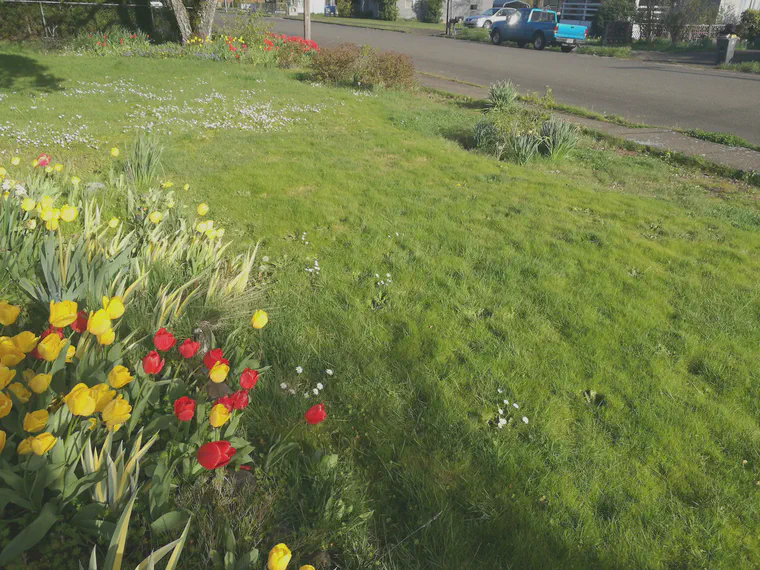Tom Cook's extraordinary lawn
 Tom Cook points out Vulpia myuros in an unirrigated lawn section.
Tom Cook points out Vulpia myuros in an unirrigated lawn section.I was passing through Corvallis and stopped to meet Tom Cook, who maintains his primarily bentgrass lawn with the greatest of care. Or is it neglect? He has not applied fertilizer to the lawn in 15 years, irrigates during the summer dry period only enough to keep the grass green, mows weekly, hand pulls the most egregious weeds, interseeds with white clover, and even keeps an unirrigated strip of turf in which one can find rat’s-tail fescue (Vulpia myuros). He’s got a little bermudagrass (Cynodon dactylon) from Seattle, has tried to grow Zoysia, and can identify all kinds of grasses as their abundance ebbs and flows through the seasons and over the years in different sections of the lawn.
I recorded this video in which Tom explained how he manages the front lawn, shows a few plants that grow in the unirrigated strip of lawn, and then gives a tour of the back yard and shows a few specimens from his grass collection.
Later in the day, I was in Willamina where I saw an unirrigated lawn with no Poa annua, lots of Vulpia myuros, plenty of English daisy (Bellis perennis), and some bentgrass (Agrostis spp.).

The Pacific Northwest has some great lawns. And great weather for all kinds of plants to grow. But what plants do grow is dependent on a lot of things. It’s partially about what was planted, but largely, I think, after talking with Tom, the equilibrium species composition of lawns in this part of the world is controlled by how the grass is managed.
Many of you will have read Piper and Oakley’s 1917 classic, Turf for Golf Courses, and will recall that the book starts with a discussion of fine English lawns, and goes on to say that:
most American lawns become hopelessly deteriorated within five or six years in spite of better care than English lawns receive, including abundant rolling. There is one region in the United States, however, in which lawns nearly as good as those of England are the rule, namely, Oregon and Washington west of the Cascade Mountains. This region has a climate more nearly approaching that of England than any other part of America, the drier summers constituting the principal difference.
With these drier summers, there is some variation in how much irrigation is supplied to lawns. One can then find lawns that range from complete Poa annua, to almost all bentgrass, to those made up of rat’s-tail fescue and English daisy. And everything in between.
For an even more in-depth discussion with Tom Cook about lawn ecology in the Pacific Northwest, have a listen to our ATC Office Hours discussion.